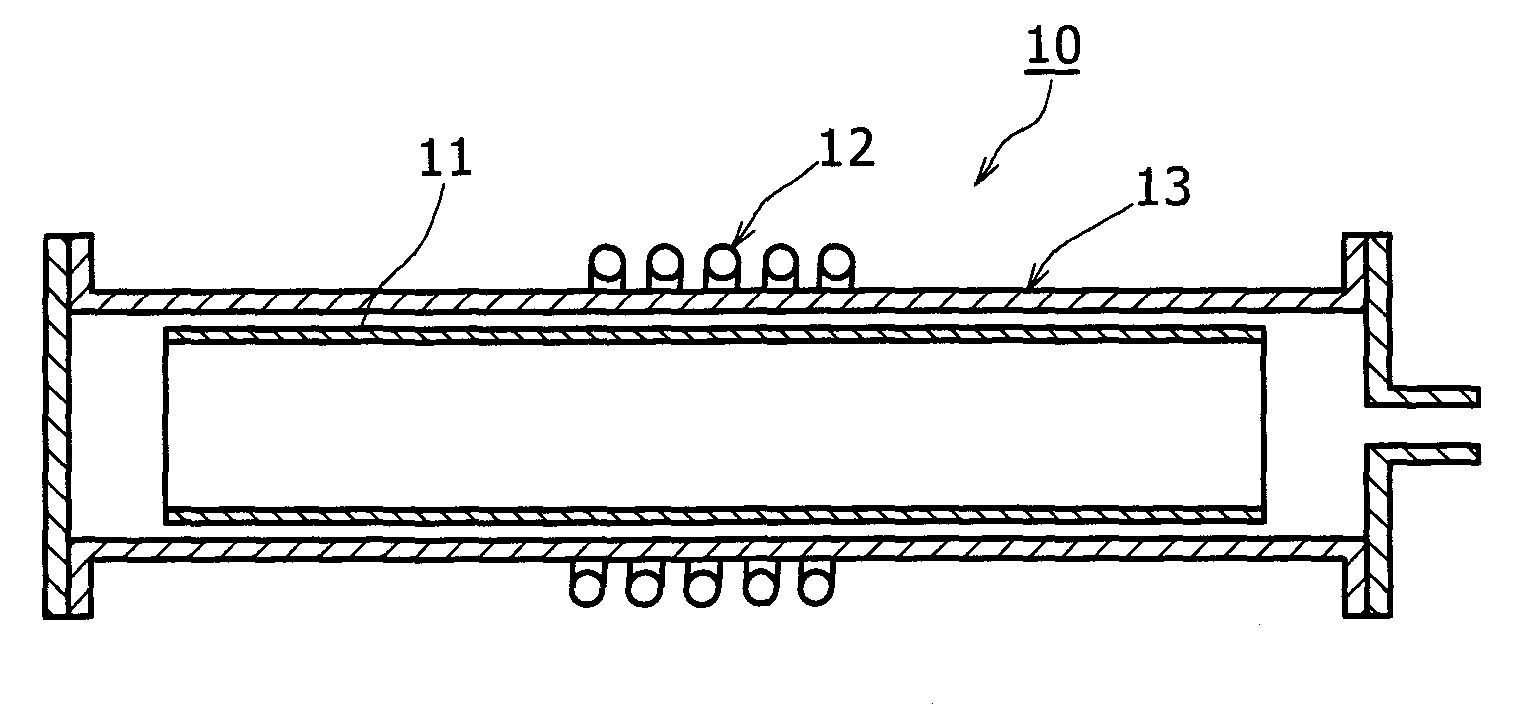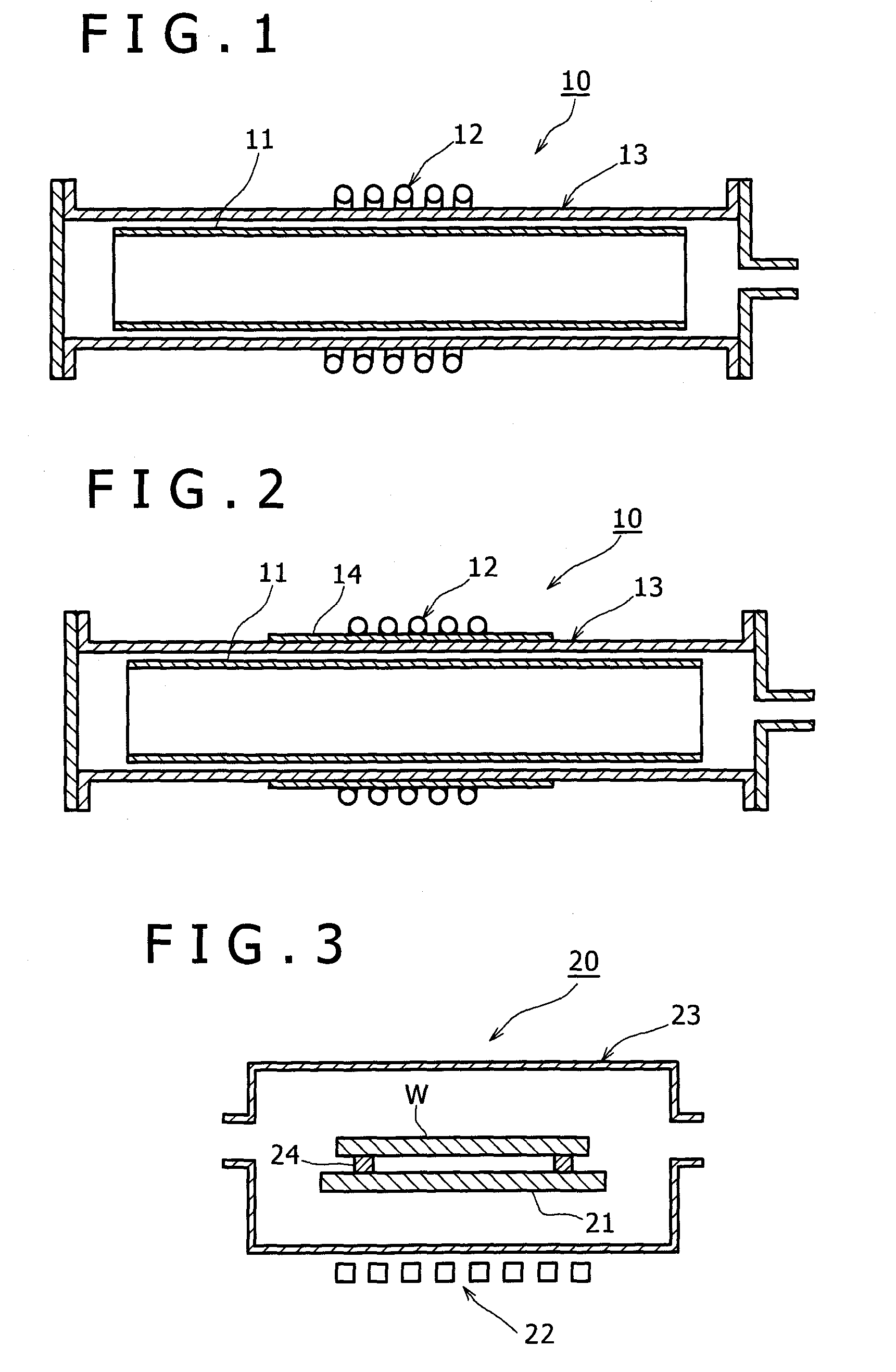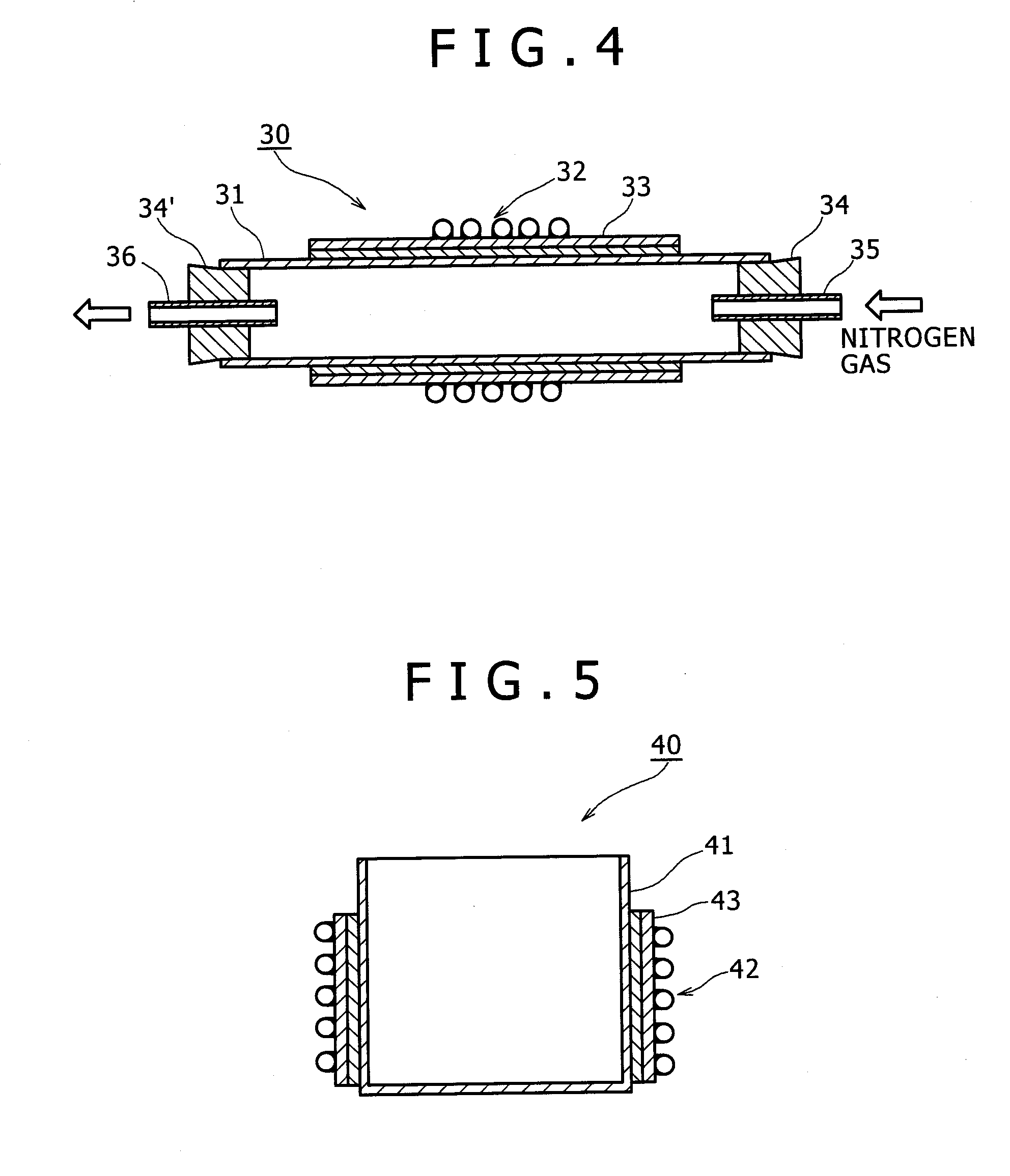Induction heating element made of glassy carbon, heating device and heater
- Summary
- Abstract
- Description
- Claims
- Application Information
AI Technical Summary
Benefits of technology
Problems solved by technology
Method used
Image
Examples
example 1
[0059]Next, examples of the glass-like carbon induction heating element of the invention, and the heating apparatus using the heating element are described.
[0060]First, description is made on measurement of infrared emissivity as infrared radiation intensity of each of the opposed and non-opposed faces to the object-to-be-heated of the glass-like carbon induction heating element. For the measurement of infrared emissivity, Fourier transform infrared spectrophotometer JIR-5500 and infrared radiation measurement unit IRR-200 manufactured by JEOL Ltd. was used as an apparatus, and a substrate 3 cm square was used as a specimen (when a heating element itself is not mounted in the apparatus, it is appropriately cut out). As a method of measuring infrared emissivity, spectral radiant intensity (measurement values) of two points (160° C. and 80° C.) in a black-body furnace and the intensity of the specimen were measured, then the intensity and spectral radiant intensity of the black-body (...
example 2
[0073]In the heating apparatus 10′ as shown in FIG. 2, the same glass-like carbon induction heating element as in the example 1-1 was used as the glass-like carbon induction heating element 11, and carbon fiber felt (“KRECA FR” manufactured by Kureha Corporation) 3 mm in thickness was wound on an outer circumferential face of the reactor vessel 13 as the covering member 14. Then, a heating test was performed at the same condition as in the example 1. As a result, 12 sec was taken as time before temperature of a central portion of the inside of the glass-like carbon induction heating element reached 600° C. In addition, heat radiation from a surface of the reactor vessel 13 was prevented, consequently high heating efficiency was able to be obtained compared with that in the example 101 in which the covering member 14 was not provided.
[0074]Next, a heater of the invention is described.
[0075]FIG. 4 is a cross section diagram schematically showing a configuration of a heater according t...
example 3
[0082]Next, an example of the heater of the invention is described below.
[0083]First, for a material resin of glass-like carbon, a commercially available, liquid phenol resin, PL4804 manufactured by Gun-Ei Chemical Industry Co., Ltd. was subjected to heat treatment for 1 hour at 100° C. under reduced pressure to be adjusted in moisture percentage, and then used as the material resin of glass-like carbon.
[0084]Next, for molding of a phenol resin cylindrical body, a centrifugal molding machine was used, which has a cylindrical centrifugal molding die made of stainless steel 60 mm in inner diameter and 600 mm in length. The liquid material resin of 520 g was charged in the centrifugal molding die, then the material resin was cured by holding the resin for 24 hours at a die surface temperature of 80° C. while the centrifugal molding die was rotated at a speed of 600 revolutions per minute, and consequently the phenol resin cylindrical body was obtained.
[0085]Next, the phenol resin cylin...
PUM
 Login to View More
Login to View More Abstract
Description
Claims
Application Information
 Login to View More
Login to View More - R&D
- Intellectual Property
- Life Sciences
- Materials
- Tech Scout
- Unparalleled Data Quality
- Higher Quality Content
- 60% Fewer Hallucinations
Browse by: Latest US Patents, China's latest patents, Technical Efficacy Thesaurus, Application Domain, Technology Topic, Popular Technical Reports.
© 2025 PatSnap. All rights reserved.Legal|Privacy policy|Modern Slavery Act Transparency Statement|Sitemap|About US| Contact US: help@patsnap.com



